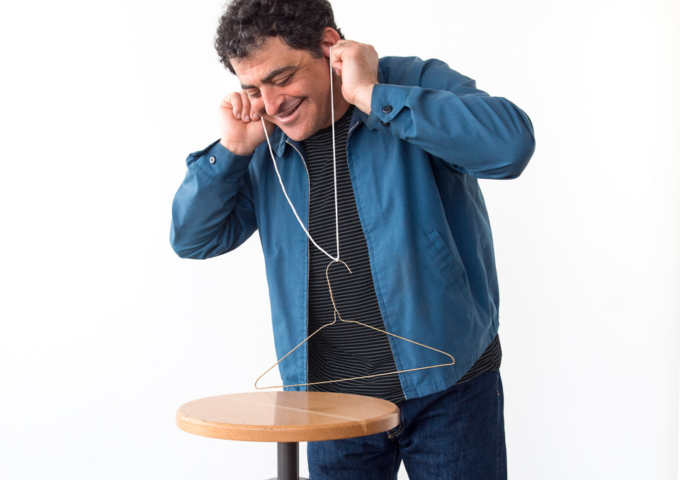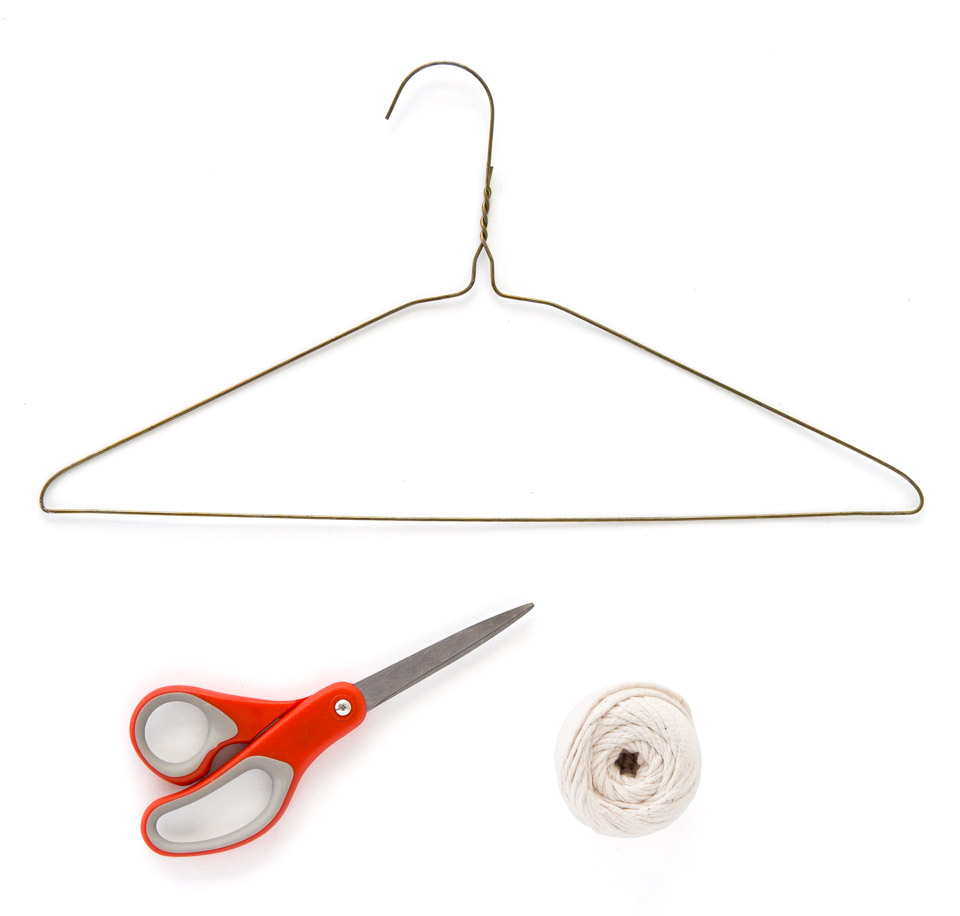
What you need
- Unpainted metal clothes hanger
- String
- Scissors
- A wooden spoon or pen
Optional: Once you have tried the coat hanger, you can also try other objects such as a cooling or baking rack, metal tongs and a cool oven rack.
Safety
- Be careful of sharp edges when using the scissors
- Keep the coat hanger hook away from your eyes
- Do not put your fingers into your ears
What to do
- Cut two lengths of string, each about 60cm long.
- Tie one end of each string to a different end of the metal coat hanger.
- Wind the free end of one string around your index finger a few times.
- Wind the other string around the index finger on your other hand.
- Allow your assembly to swing freely from your two fingers by leaning forward.
- Place your index fingers (with the string wrapped around) gently on the small flap of skin just in front of your ears, closing off the ear canal without putting your fingers into your ears.
- If you have someone to help you, ask them to lightly run a wooden spoon or a pen over the coat hanger. If you are on your own, gently swing the hanger so that it bangs lightly against something hard, like the edge of a desk or a door frame.
- Let the hanger hang free and listen. As the hanger vibrates, you should hear a sound! Try again with your fingers not on your ears and compare the difference.
To go further, try using different materials and see how well they work. Instead of using a metal coat hanger, for instance, try a cooling/baking rack or a pair of metal tongs, or even an oven tray (make sure it isn’t hot first!).
Before reading below, make some guesses about why you can’t hear the sounds unless your fingers are touching your ears. What do you think might be happening?
What’s going on?
Sound is all about vibrations. When somebody speaks, their voice box vibrates, and this makes the air around it vibrate. When these vibrations reach your ear, they make your eardrum vibrate too and this is processed by your brain as sound. The volume of the sound changes depending on what the sound vibrations are travelling through.
When you hit the coat hanger against another object, it starts vibrating. The vibrations in the metal travel through the string and into your fingers. The vibration is transferred to your head and you hear those vibrations as sound. Compare the sound of the coat hanger without holding the string against your ears. The sound is much duller. The same vibration sounds different when it travels through different materials, such as through the string or through the air.
Although most of the sounds we hear are transmitted through the air, air is not the only carrier of sound waves—nor is it the best. A ticking clock can be heard through the air if you’re close enough, but put your ear to the table with the clock on it and the ticking will sound much louder.
When something vibrates, the strength of the vibration and the length of time the vibrations continue can vary quite a bit, depending on the materials involved. Hit a piece of wood with a stick and the sound lasts for just an instant. Hit a metal gong with the same stick, and the sound may continue for many seconds.
Why the difference? In some materials, the molecules are tightly packed together; in other materials, the molecules are more loosely arranged. How close the molecules are to one another can affect how easily they can bump into each other to start a vibration moving along.
This activity was adapted from the Exploratorium’s ‘Science Snacks: low-cost, teacher-tested activities for the classroom and the curious’. You can find this and many more activities at https://www.exploratorium.edu/snacks/secret-bells






